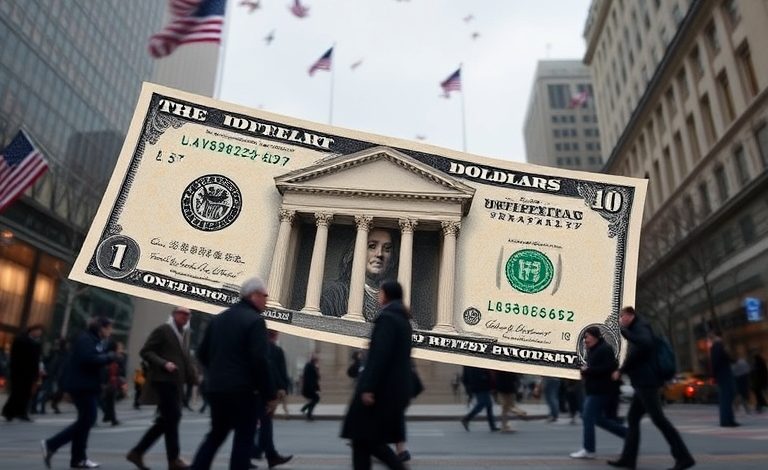Weak economic data weighs on dollar ahead of long holiday

The dollar fell broadly on Wednesday in pre-holiday trading, digesting a series of indicators that underscored the resilience of the U.S. economy while investors assessed the risk that President-elect Donald Trump could start a tariff war that no one will win.
The drop extended the dollar’s recent rally. Few traders were interested in building or holding positions ahead of the long Thanksgiving holiday for many that falls at the end of the month. Markets are closed on Thursday and exchanges close early Friday.
Moreover, revised data showing gross domestic product rose at a 2.8% rate in the third quarter, as expected and the same as last month’s first estimate, did little to bolster the case for further Federal Reserve easing next month, although traders are still leaning toward it, raising the odds slightly to 67%.
Consumer spending data that showed progress in reducing inflation has not stalled in recent months while the economy retained much of its strong growth momentum early in the fourth quarter.
“We all expected inflation to rise a little bit, but inflation didn’t get out of hand. That’s the key,” said Peter Cardillo, chief economist at Spartan Capital Securities in New York.
“This sets the stage for a 25 basis point cut in December and then perhaps a pause. But the pause is likely not because of the inflation data, but because of uncertainty over Trump’s tariffs. I think the Fed will be cautious.”
The Commerce Department’s personal consumption expenditures price index rose 0.2% in October, matching the unrevised gain in September. In the 12 months through October, the PCE price index rose 2.3% after rising 2.1% in September.
While durable goods orders in October rose a smaller-than-expected 0.2%, jobless claims at 213,000 were slightly below the previous week’s upwardly revised 215,000, suggesting a strong labor market.
The dollar/yen fell to its lowest in about five weeks, down 1.43% at 150.91 as trading slowed. The dollar’s weakness lifted the euro by 0.74% to $1.0564. The EUR/USD pair hit a one-week high, while the dollar index, which measures the greenback’s value against a basket of currencies including the yen and the euro, fell to its lowest since Nov. 13 and was down 0.74% at 106.06 in afternoon trading. That’s down 1.9% from a two-year high hit on Friday.
“Today could be more profit-taking, at least for the U.S. over the long weekend. It’s been, as I said, a tremendous performance here and it’s still very strong,” said Amu Sahota, chief executive officer of ClarityFX in San Francisco.
Trump’s vows on Monday to impose hefty tariffs on Canada, Mexico and China, the three biggest US trading partners, sent their currencies lower and left investors on edge.
Some analysts have argued that inflation risks from the proposed tariffs and tax cuts could deter Trump from introducing more disruptive measures.
“The recent sharp rise in the dollar is significantly reducing the value of dollar assets outside the US and thus increasing the need for a rebalancing of dollar selling at the end of the month,” said Cheryl Dong, FX strategist at Barclays (LON:BARC).
The outperforming yen has benefited from bets on a December rate hike in Japan and position adjustments.
The dollar sell-off accelerated on Wednesday after the pair fell below its 200-day moving average at 151.99.
“I think that’s somewhat relevant in today’s market as well, technically speaking,” Sahota said.
Analysts noted some relief that the country is not in the crosshairs of Trump’s potential tariffs.
“Japan has a strong hand in dealing with U.S. trade concerns,” said Jane Foley, chief foreign exchange strategist at Rabobank.
“It is the largest overseas holder of U.S. bonds and the largest provider of foreign direct investment into the United States,” she added.
A ceasefire between Israel and Iran-backed Hezbollah went into effect on Wednesday under a deal aimed at ending hostilities across the Israeli-Lebanese border. While wars in the Middle East and Ukraine were not a major factor on Wednesday, they did support the safe-haven dollar.
Against its Canadian counterpart, the dollar was down 0.18% at C$1.4027, after touching a 4-1/2-year high of C$1.4177 on Tuesday.
The dollar was little changed against the Mexican peso, near Tuesday’s high of 20.622, its highest since July 2022.
The British pound rose 0.81% to $1.267, the Australian dollar rose 0.34% to $0.6494 and the New Zealand dollar rose 1.06% to $0.5896.
The Chinese yuan steadied after falling on Tuesday’s tariff news. The dollar fell 0.15% to 7.245 against the greenback.
In cryptocurrencies, bitcoin rose 5.19% to $96,414, continuing its run that took it to nearly $100,000 last week.